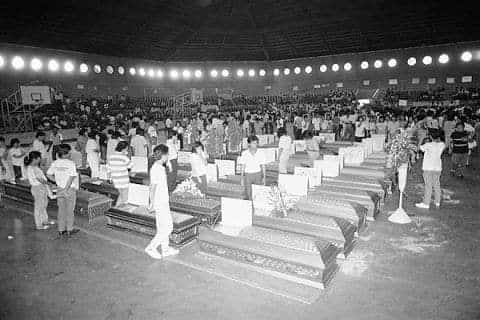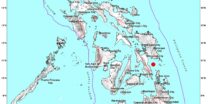ON December 20, 1987, the M/V Dona Paz collided with oil tanker M/V Vector. More than 4,300 people died or went missing in what was dubbed as the worst maritime disaster of the 20th century.
A little over a decade later, 437 people died as the M/V Princess of the Stars capsized. Over 600 are still missing.
Shifting gears and going back, at the height of World War 2, at least four Japanese ships – including the Musashi, Japan’s second most powerful battleship and their two destroyers, the Nagato and Myoko likewise sunk.
The common denominator? They all happened inside in what has been dubbed as the “Romblon Triangle.”
Want to find out more? Read on as we open Republicasia’s Cryptic Republic Archives.
Where is the Romblon Triangle?
The Romblon Triangle is our local version of the infamous Bermuda Triangle.
The triangle’s boundaries cover the entire area of the Romblon Province. Its endpoint can be found at the Concepcion Municipality, and is in-between the Dos Hermanas Islands (Isabel and Carlota island) and the Sibuyan Island.
For years, it has been witness to countless maritime disasters.
Courtesy: Cebu Channel Online
Let’s start with the biggest. MV Dona Paz collided with the oil tanker MV Vector on December 20, 1987. It killed more than 4000 people. It happened in Tablas Strait, which is located along Mindoro Island from Island and Romblon.
On April 22, 1980, some seven years before Dona Paz, the MS Don Juan collided with another oil tanker MT Tacloban. Some 1004 passengers including the crew were reportedly onboard. 176 people died.
A recent incident occurred with the MV Princess of the Stars, as the passenger ship
3| M/V Princess of the Stars capsized on June 21, 2008. It capsized off the coast of San Fernando, Romblon. A total of 437 people perished, with over 600 still missing.
Related Article: The exorcism of Clarita Villanueva
Another incident was recorded this time involving Japanese ships during World War 2, when four Japanese ships also fell victim to the Romblon Triangle. Japan’s then second most powerful battleship the Musashi, along with two destroyers—Nagato and Myoko—were sunk by Allied planes during the Battle of Sibuyan Sea. Another ship, the Yamato sustained heavy damage and eventually sank as it arrived in Okinawa.
Lolo Amang and his ghost ship
But here is where it gets more interesting.
Locals who lived in the nearby Sibale Island have talked about a “ghost ship” that is roaming the Romblon Triangle.
The Captain is a certain “Lolo Amang.”
Legends have it that it appeared before the sinking of the MV Don Juan in 1980.
The ship’s Captain claimed to have seen the ghost ship. As he tried to avoid it, he collided with the passing oil tanker.
But, how much of the story is true?
The Romblon Triangle?
No less than the Philippine Coast Guard had said that tha waters from the Pacific Ocean and the West Philippine Sea intersect in Tablas Strait. This forms riptides that cause big waves that make the area dangerous for ships.
It has also been dubbed as the EDSA of Philippine waters due to the vast majority of Philippine and foreign vessels that pass through on their way to Visayas and Mindanao.
With such a busy seaway, sea mishaps, while it must, had become a commonplace.
Investigations at the MV Dona Paz incident revea;ed that the ship did not have a radio and that the life jackets were locked away. The tanker Vector on the other hand was found to be unseaworthy and to be operating without a license, a lookout, or a qualified mast.
MV Don Juan on the other hand, was said to be carrying 1004, despite only being cleared to carry 864 persons.
The MV Princess of the Stars on the other hand sailed through rough waters and a storm at that time.
Now before we spook the readers and tourists wanting to go to Romblon, it’s actually in my bucket list.
I have yet to see the famous tarsiers in real life. They also have tons of beaches and good food to feast upon. And the natives are really good people.
But one thing that has me thinking about the legend of Lolo Amang is that he pilots a “golden ship” which shows itself to fishermen before tragedy strikes. I would like to see a golden ship, but I don’t want what comes after.
Thank you for reaching it this far. If there is a Philippine myth or urban legend that you would like to be opened in the cryptic files of the Republic Archives, feel free to leave your comments and suggestions. Also, like and share the page.
Until then, the book closes – temporarily.








